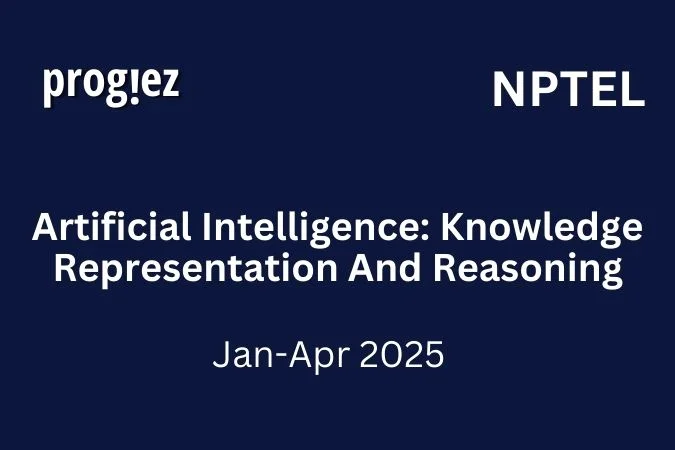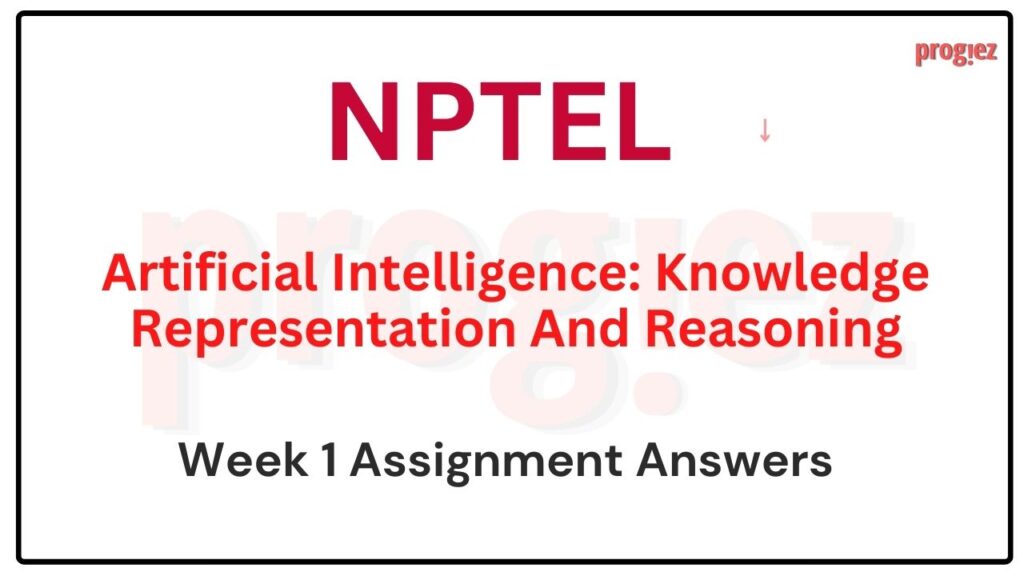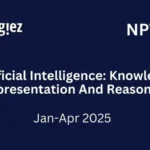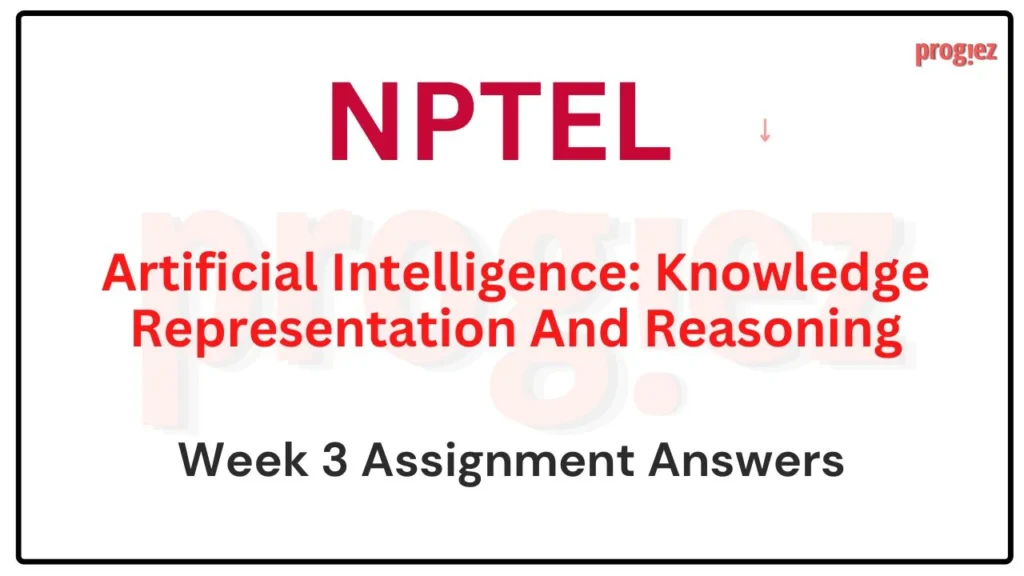Artificial Intelligence: Knowledge Representation And Reasoning Week 5 Answer
Are you looking for AI Knowledge Representation And Reasoning Week 5 Answer . All weeks assignments available here.
Table of Contents

AI Knowledge Representation And Reasoning Week 5 Answer (Jan-Apr 2025)
Course link: Click here to view course on Nptel Website
1. Select the formulas that are in CNF.
A) (¬P ∨ Q)
B) (¬R) ∧ (¬P ∨ Q) ∧ (¬Q ∨ R)
C) (¬R) ∨ (¬P ∧ Q) ∨ (¬Q ∧ R)
D) ¬R
E) P ⊃ Q
2. Convert to CNF and simplify:
¬( [P ⊃ (Q ∨ R)] ⊃ ( [Q ⊃ A] ⊃ ( [R ⊃ A] ⊃ [P ⊃ A] ) ) )
A) (¬P ∨ Q ∨ R) ∧ (¬Q ∨ A) ∧ (¬R ∨ A) ∧ (P) ∧ (¬A)
B) (¬P ∨ ¬Q ∨ ¬R) ∧ (Q ∨ A) ∧ (R ∨ A) ∧ (P) ∧ (¬A)
C) (P) ∧ (¬Q) ∧ (¬R) ∧ (¬Q ∨ A) ∧ (¬R ∨ A) ∧ (¬A)
D) None of the above
3. Convert to Skolem form:
∀x∀y { ( ∀y[ P(x,y) ⊃ Q(y) ] ) ⊃ [ Q(y) ⊃ R(x,y) ] }
A) ∀x∀y{ [P(x,sk(x)) ⊃ Q(sk(x))] ⊃ [Q(y) ⊃ R(x,y)] }
B) ∀x∀y{ [P(x,y) ⊃ Q(y)] ⊃ [Q(sk(x)) ⊃ R(x,sk(x))] }
C) ∀x∀y∀z{ [P(x,y) ⊃ Q(y)] ⊃ [Q(z) ⊃ R(x,z)] }
D) None of the above
4. Convert to clause form:
∀x∀y { ( ∀y[ P(x,y) ⊃ Q(y) ] ) ⊃ [ Q(y) ⊃ R(x,y) ] }
A) [P(?x,?y) ∨ ¬Q(?y) ∨ R(?x,?y)] ∧ [¬Q(?u) ∨ ¬Q(?u) ∨ R(?t,?u)]
B) [P(?x,?z) ∨ ¬Q(?z) ∨ ¬Q(?y) ∨ R(?x,?y)]
C) [P(?x,sk(?x)) ∨ ¬Q(?y) ∨ R(?x,?y)] ∧ [¬Q(sk(?t)) ∨ ¬Q(?u) ∨ R(?t,?u)]
D) [P(?x,sk(?x)) ∨ ¬Q(sk(?x)) ∨ ¬Q(?y) ∨ R(?x,?y)]
5. To resolve Clause 1 with Clause 2, which of the following are possible unifiers?
Clause 1: { P(a, ?y, f(?y)); }
Clause 2: { ¬P(?x, ?z, f(g(?x))); ¬P(?z, ?x, f(?x)); }
A) { x -> a; y -> a; z -> a; }
B) { x -> a; y -> z; z -> g(a) }
C) { x -> b; y -> b; z -> a; }
D) { x -> y; z -> a; }
6. For the pair of clauses in the previous question, select the most general unifier(s).
A) { x -> a; y -> a; z -> a; }
B) { x -> a; y -> z; z -> g(a) }
C) { x -> b; y -> b; z -> a; }
D) { x -> y; z -> a; }
7. Use the Resolution Method to derive all the resolvents for KB1.
KB1 = { ¬( [P ⊃ (Q ∨ R)] ⊃ ( [Q ⊃ A] ⊃ ( [R ⊃ A] ⊃ [P ⊃ A] ) ) ) }
A) ⊥ (false)(bottom)
B) ⊤ (true)(top)
C) A
D) ¬P ∨ ¬Q
E) R ∨ A
8. Is KB1 consistent?
A) Yes
B) No
C) Cannot be determined
9. Which of these sentences follow from KB2?
KB2 = {
- ¬L(?a,?b) ∨ G(?a,?b)
- ¬L(?u,?v) ∨ ¬A(?v) ∨ C(?u,?v)
- ¬Q(?x,?y) ∨ ¬P(?y) ∨ ¬A(?z) ∨ L(?x,?z)
- ¬P(?t) ∨ A(?t)
- Q(Ana,Fedo)
- P(Fedo)
}
A) ¬L(Ana,Fedo)
B) ∃m∃n Q(m,n)
C) ∃t A(t)
D) A(Fedo) ∧ L(Ana,Fedo)
10. Can the Resolution Refutation Method be used to prove that KB2 entails the following statement?
∃m∃n C(m,n)
A) Yes
B) No
Nptel AI Knowledge Representation And Reasoning Week 5 Answer (Jan-Apr 2025)
For answers or latest updates join our telegram channel: Click here to join
These AI Knowledge Representation And Reasoning Week 5Answer
Nptel AI Knowledge Representation And Reasoning of All weeks: Click Here
More Nptel Courses: https://progiez.com/nptel-assignment-answers



